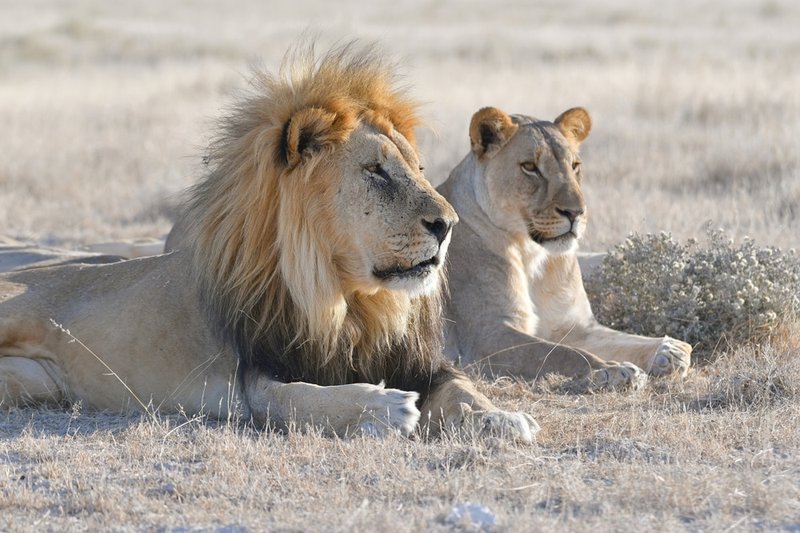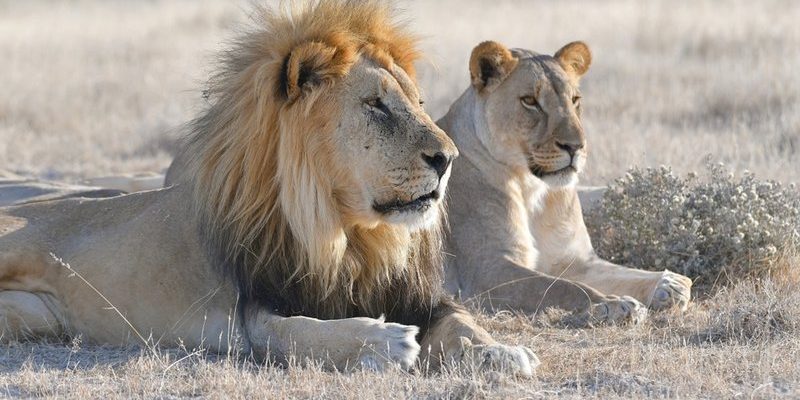
Picture this: lions are no couch potatoes. They’re agile and fierce, but they’ve also mastered the art of survival in places where the conditions can be, well, downright brutal. Whether they’re roaming the sunbaked plains of Africa or camping out in the thick of brush, these predators have incredible adaptability, ensuring they continue to reign as the kings of the jungle. So how do they do it? Let’s dig deeper.
The Power of Social Structure
One of the most fascinating aspects of lion life is their social structure. Unlike many big cats that prefer a solitary lifestyle, lions live in groups called prides. In a pride, you’ll find a dynamic social hierarchy, which really helps them tackle challenges in their environment.
Typically, a pride consists of a few related females, their cubs, and a couple of dominant males. This setup is crucial for survival. Think of it like a family team—everyone has a role to play. The females work together to hunt, while the males defend the territory. This teamwork means they can take down larger prey, ensuring everyone gets enough food. It’s easier to hunt as a group, and this collaboration helps them survive in environments where food can be scarce.
Additionally, living in a pride provides safety in numbers. When they band together, they can fend off rivals and protect their young. You might be wondering, how does this really help? Well, in the wild, competition can be fierce, and by sticking together, lions increase their chances of survival.
Adaptations to Heat and Environment
Lions are built to handle the harsh, hot climates of their habitats, but they have some clever tricks up their fur-covered sleeves. Their bodies are designed to deal with high temperatures, ensuring they stay cool while conserving energy.
For one, lions are crepuscular, meaning they’re most active during the early morning and late afternoon. This behavior helps them avoid the sweltering midday heat. While other animals may be out and about, lions prefer to snooze in the shade during the hottest part of the day. Honestly, who wouldn’t want to take a nap when it’s blazing outside?
Their thick fur might look like a cozy blanket, but it also serves a purpose. The color of their coats helps reflect sunlight, keeping them cooler. This is crucial in environments like the African savanna, where the sun can be relentless. And when they do need to exert energy—like during a chase—lions often rely on short bursts of speed rather than long-distance running. This strategy prevents them from overheating and allows them to conserve energy for when it really counts.
Hunting Strategies for Survival
Hunting is a big part of lion life, and they’ve developed some pretty neat strategies to ensure they can grab a meal when needed. Their primary prey includes large mammals like wildebeest, zebras, and buffalo. But since these animals can be tough and fast, lions have to be smart.
One effective method they use is called “ambush” hunting. This involves stalking their prey quietly and then launching a surprise attack. Imagine a cat waiting patiently for a mouse to scurry by; lions have similar patience. They often rely on the element of surprise to get as close as possible before pouncing.
Another interesting aspect is how lionesses work together. They might split up into smaller groups to circle their prey, driving them towards the other hunters. It’s like a well-rehearsed dance, ensuring they can work as a team and maximize their chances of catching something to feast on. After a successful hunt, they often gorge themselves. A single meal can sustain them for days, which is a big help when food isn’t always available.
Water Sources and Hydration
Surviving in the wild means finding water, and lions have some clever ways to stay hydrated. Unlike many animals, lions don’t need to drink water every day—thanks to their diet. The moisture in their prey provides a significant source of hydration, which is crucial during long periods without direct access to water.
When they do need to drink, lions often make a trip to nearby watering holes. They usually choose times when it’s safer to drink, like early morning or evening. Here’s the thing: these watering holes can often be crowded with other animals, making them prime locations for an ambush. Lions are cautious, always ready to defend their territory and avoid potential threats.
Additionally, they can dig down to find underground water sources when surface water is scarce. This adaptability is essential for surviving in dry seasons when other animals might struggle to find enough to drink.
Behavioral Adaptations
Lions are also incredibly skilled at adapting their behavior based on their environment. One of their most interesting traits is how they communicate and socialize. They use vocalizations, body language, and even scent marking to establish territory and keep their pride cohesive.
Vocalizations like roars can carry for miles, signaling their presence and deterring intruders. This is critical in areas where they might face competition from other predators. Let’s be real: no one wants to stumble into another lion’s territory without a proper invitation.
Furthermore, lions have a strong sense of smell, which plays a key role in finding food and mates. They can detect scents from far away, helping them locate prey or notice when another pride is nearby. This heightened awareness can make the difference between survival and finding yourself in a less-than-ideal situation.
Raising Cubs in a Tough World
When it comes to raising cubs, lions face unique challenges in harsh environments. Lionesses give birth to litters of about one to four cubs, and they’re fiercely protective of their young. Cubs are born blind and completely dependent on their mothers, making their survival all the more crucial.
To give their cubs the best chance, lionesses often hide them in dense vegetation away from the pride’s main territory. This keeps them safe from predators while they grow stronger. During this period, the mother will only return for feedings to minimize the risk of detection.
As cubs grow, they start to learn essential skills through play and observation. This is how they pick up hunting techniques and understand social interactions within the pride. Honestly, it’s like the ultimate school for survival, where the lessons are hard-earned and real. By teaching their cubs survival skills, lionesses ensure that the next generation is equipped to thrive in tough environments.
The Role of Humans in Lion Survival
Finally, we can’t talk about lions without acknowledging the impact of humans on their survival. While lions are incredibly resilient, human activities such as habitat loss, poaching, and conflict greatly threaten their population. It’s a harsh reality that these majestic animals face—and one that requires our attention.
Conservation efforts are crucial to help protect lions and their habitats. This includes creating protected areas, supporting anti-poaching initiatives, and working with local communities to reduce conflicts between humans and lions. Educating people about the importance of lions in their ecosystems can also foster coexistence.
Here’s the thing: lions are more than just symbols of strength; they play a key role in maintaining the balance of their environments. Supporting conservation efforts isn’t just about saving one species—it’s about preserving the rich biodiversity that our planet needs to thrive.
In conclusion, lions are truly remarkable creatures that have adapted in countless ways to survive in harsh environments. From their social structures and hunting strategies to their ability to handle heat and raise cubs, there’s so much to admire about these big cats. As we learn more about them, it’s essential to support their survival so future generations can also witness their majesty in the wild.

